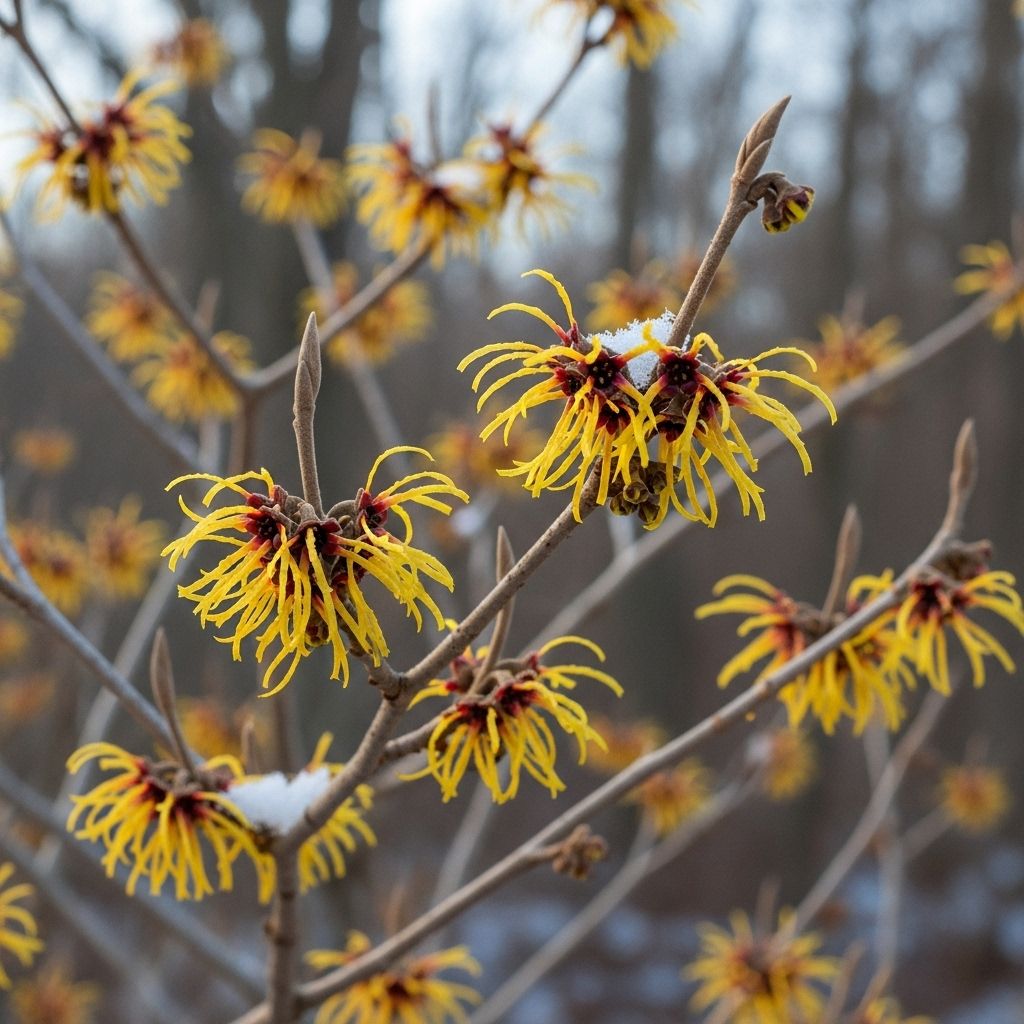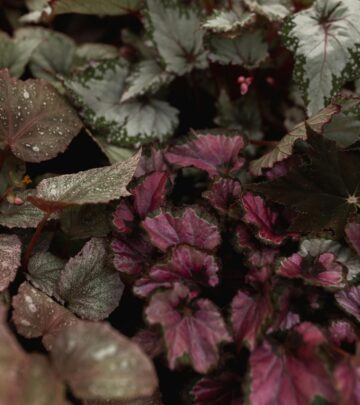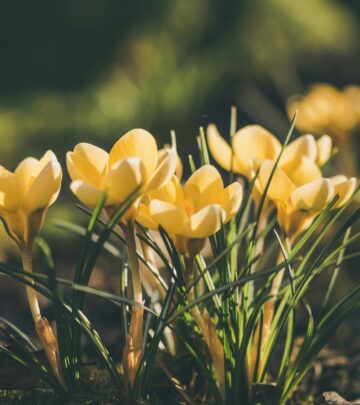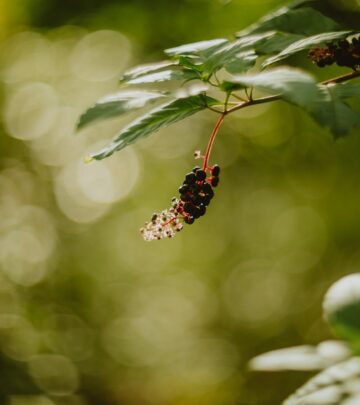How To Grow Witch Hazel: 5 Reasons To Choose This Winter Shrub
Discover the beauty, cultivation, and benefits of witch hazel—a stunning shrub with winter blooms and year-round appeal.

Image: HearthJunction Design Team
Growing & Caring for Witch Hazel
Hamamelis mollis (Chinese witch hazel) and its striking hybrid cousin H. × intermedia ‘Orange Beauty’ are cherished for their late winter color and delicate fragrance. Witch hazel, a large deciduous shrub or small tree, is prized for its vibrant, spider-like blooms that brighten the colder months when few other plants flower. Virtually maintenance-free and resistant to most pests and diseases, witch hazel offers lasting visual and practical benefits for both new and seasoned gardeners.
Table of Contents
- Why Choose Witch Hazel?
- Witch Hazel Species & Varieties
- Best Locations & Planting Conditions
- Care & Maintenance
- Seasonal Interest
- Medicinal & Cosmetic Uses
- Potential Problems & Pest Resistance
- Propagation & Pruning
- Garden Design Ideas Using Witch Hazel
- Frequently Asked Questions
Why Choose Witch Hazel?
- Winter Blooms: Witch hazel produces fragrant, ribbon-like flowers in shades of yellow, orange, or red from late fall through early spring, offering rare winter color.
- Low Maintenance: Once established, these shrubs or small trees need minimal care and are highly resistant to pests and disease.
- Seasonal Foliage: Attractive green leaves turn brilliant yellow or orange in autumn, extending seasonal interest.
- Wildlife Friendly: Witch hazel’s blooms attract early pollinators and songbirds, while its dense branching offers shelter for small wildlife.
- Diverse Uses: Extracts are valued in cosmetics and home remedies for their soothing, anti-inflammatory qualities.
Witch Hazel Species & Notable Varieties
There are several species and cultivated varieties of witch hazel, each offering unique features for gardens across a range of climates.
| Species/Cultivar | Origin | Bloom Time | Flower Color | Hardiness |
|---|---|---|---|---|
| Hamamelis virginiana | Eastern North America | Late Fall | Yellow | USDA 3–9 |
| Hamamelis vernalis | Central US | Late Winter | Yellow to Red-Orange | USDA 4–8 |
| Hamamelis mollis | China | Late Winter | Pale Yellow | USDA 5–8 |
| Hamamelis × intermedia (‘Diane’, ‘Jelena’, ‘Arnold Promise’) | Hybrid (Japan/China) | Winter | Yellow, Orange, Red | USDA 5–8 (‘Diane’ to 9) |
- ‘Jelena’: Noted for glowing copper fireside blooms.
- ‘Arnold Promise’: Bright lemon-yellow, heavily fragrant flowers.
- ‘Diane’: Heat-tolerant, with striking red flowers.
Choose a witch hazel variety based on flower color, fragrance, and ultimate size for your garden.
Best Locations & Planting Conditions
- Sunlight: Witch hazels thrive in full sun for best bloom display, but tolerate partial shade, especially in hotter climates.
- Soil: Prefers moist, well-drained, organically rich soils. Tolerant of both slightly acidic and neutral to alkaline conditions.
- Water: Requires regular watering during establishment; mature plants exhibit some drought resistance but benefit from consistent soil moisture.
- Spacing: Allow sufficient space—most varieties mature at 10–20 feet high and wide.
- Frost Tolerance: Hardy species tolerate temperatures to –34°C (–30°F).
Planting Tips
- Plant witch hazel in autumn or early spring for best results.
- Amend heavy or compacted soils with organic matter before planting.
- Position plants where their winter display will be visible from pathways or windows.
Care & Maintenance
- Pruning: Minimal pruning is needed. To control size or shape, prune just after flowering and before summer, ensuring time for new flower buds to develop for the next year.
- Suckers: Remove suckering twigs from the base to maintain a tidy form.
- Fertilization: Fertilize in early spring with a balanced, slow-release fertilizer if growth is sluggish or leaves seem pale.
- Mulching: Apply an organic mulch layer annually to conserve moisture and suppress weeds.
Seasonal Interest
- Winter: Ribbon-like, fragrant flowers appear when few other plants bloom, providing garden color and an early nectar source for pollinators.
- Spring: Emerging foliage is lush and healthy; spent flowers may be easily removed if desired.
- Summer: Green, broad leaves offer a cooling backdrop in garden beds and borders.
- Autumn: Leaves turn warm shades of yellow, orange, or red—striking against the bare landscape.
Medicinal & Cosmetic Uses
Witch hazel extract, commonly distilled from the bark and twigs of Hamamelis virginiana, has long been utilized in herbal medicine and the cosmetic industry. Its naturally occurring tannins possess astringent and anti-inflammatory properties.
- Calms skin irritations, soothes minor cuts, and relieves itching.
- Used in toners, aftershaves, and soothing balms.
- Also used in natural remedies for insect bites and sunburn.
Note: Always consult a medical professional before using homemade remedies.
Potential Problems & Pest Resistance
- Pest Resistance: Witch hazel is largely untouched by common garden pests and is not favored by deer.
- Disease: Rarely affected by disease if grown in optimal conditions. Overly wet soils can occasionally cause root rot.
- Maintenance: Generally maintenance-free once established, requiring only occasional clean-up of leaf litter and old flowers.
Propagation & Pruning
- Propagation: Witch hazel may be propagated by seed, layering, or softwood cuttings.
- Pruning:
- Prune after flowering and before summer to shape or reduce size.
- Remove dead, damaged, or crossing branches, as well as basal suckers.
- Branches with visible flower buds may be cut and brought indoors to force into bloom.
Garden Design Ideas Using Witch Hazel
- Plant as a specimen in lawn or mixed border beds for winter impact.
- Group several witch hazels together for a dramatic mass of bloom.
- Combine with evergreen shrubs for year-round color and texture.
- Use in woodland or naturalistic plantings; underplant with early bulbs or shade-loving perennials.
- Choose varieties with different bloom times for continuous interest.
Frequently Asked Questions (FAQs)
What is the best time of year to plant witch hazel?
Plant witch hazel in early spring or fall when soil is workable and temperatures are mild, allowing roots to establish before summer heat or winter chill.
How tall and wide does witch hazel grow?
Most varieties grow 10–20 feet high and wide at maturity but can be kept smaller with selective pruning.
Do I need more than one witch hazel for flowers?
No, witch hazel is self-fertile and does not require multiple plants to bloom, though grouping several can produce a more striking display.
When does witch hazel flower?
Depending on species, blooms appear in late fall, winter, or early spring—long before other flowering shrubs wake up.
Can witch hazel be grown in containers?
While young plants may adapt to large containers for several years, mature shrubs are best suited for garden beds due to their eventual size and deep roots.
How should I prune witch hazel?
Prune after blooming and before summer. Remove suckers, dead, or crossing branches and gently shape if desired. Avoid heavy pruning during the growing season.
Is witch hazel deer resistant?
Yes, witch hazel is typically avoided by deer, making it an excellent choice for woodland or rural gardens.
Does witch hazel require annual fertilizing?
Witch hazel is not a heavy feeder. Apply a balanced, slow-release fertilizer in spring only if needed for poor growth or foliage color.
Can branches be forced to bloom indoors?
Yes. In late winter, cut branches with healthy buds and place them in water indoors. Warm temperatures will encourage the buds to open and bloom.
Conclusion
Witch hazel brings unique beauty and utility to any garden, blooming when most plants are dormant and offering years of low-maintenance enjoyment. Their fragrant flowers and vibrant fall foliage, along with their ease of care and resistance to pests, make witch hazel an exceptional choice for both novices and experienced gardeners. Whether grown for their ornamental qualities or harvested for their traditional medicinal uses, witch hazel shrubs and trees are sure to make a lasting impression in every landscape.
References
Read full bio of Shinta








Community Experiences
Join the conversation and become a part of our empowering community! Share your stories, experiences, and insights to connect with other beauty, lifestyle, and health enthusiasts.